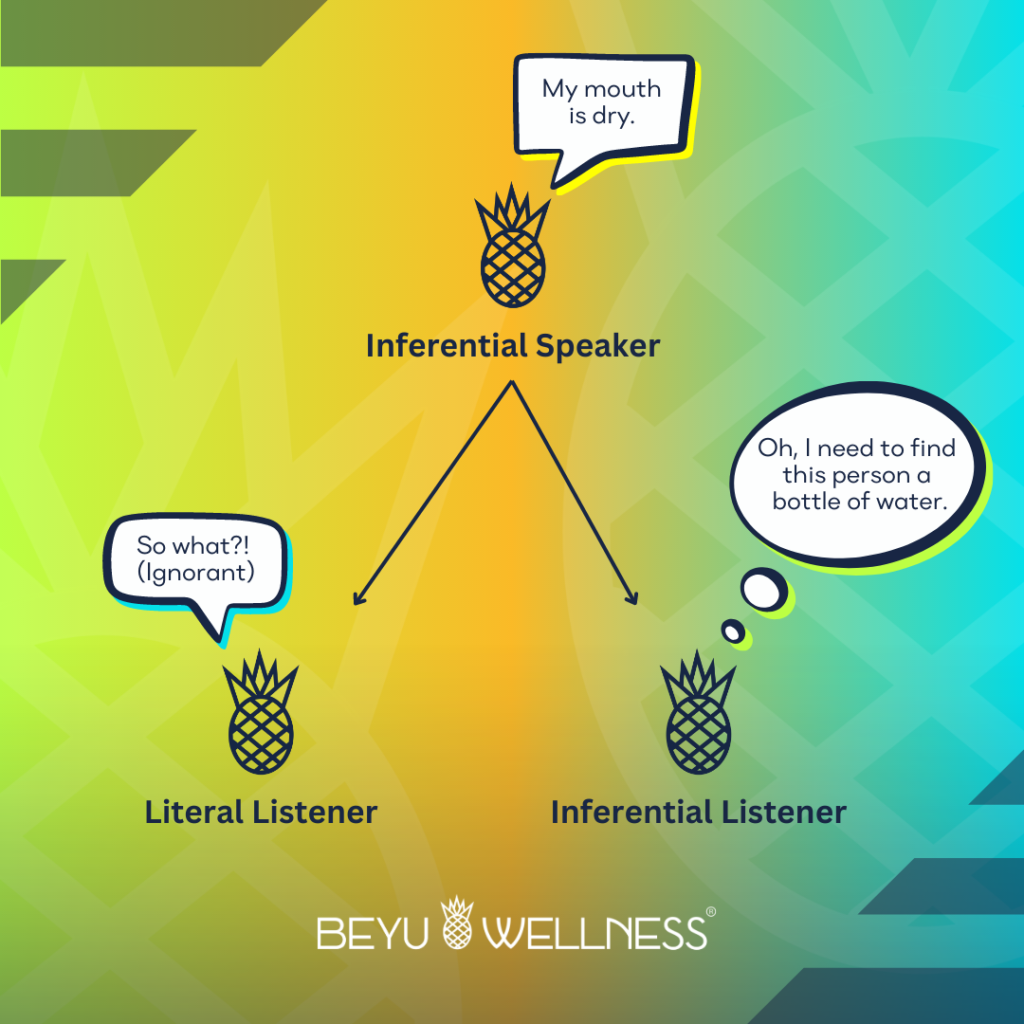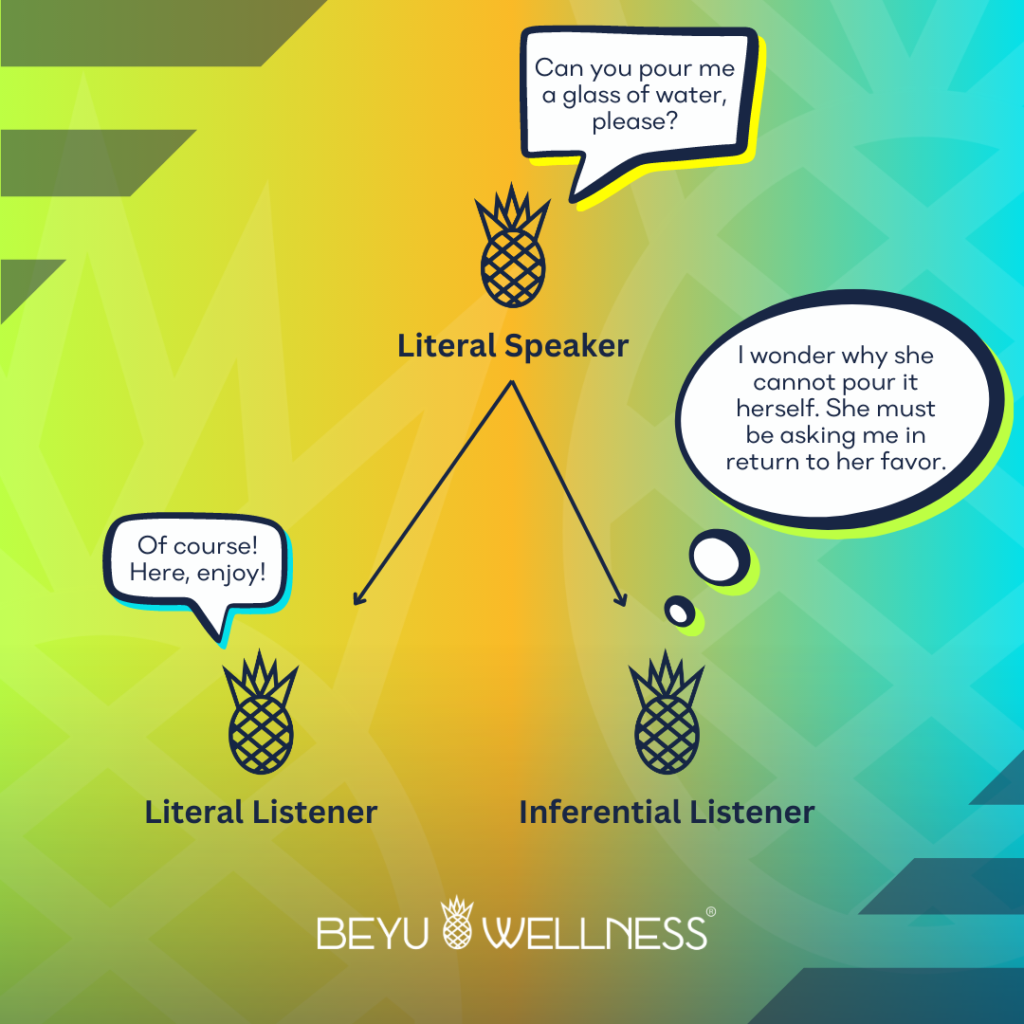
Did you know that July is celebrated as Social Wellness Month? It’s a time to reflect on your social connections and the impact they have on your overall well-being. As human beings, we are inherently wired to be social creatures. Our happiness and health are intricately tied to the quality of our relationships. And at the heart of any thriving relationship lies effective communication. It is through communication that we form deep connections, bridge understanding, and foster healthy interactions. In this article, you will learn how to identify different communication styles, starting with yours, and how to become a more effective communicator.
Have you ever noticed that there are some people in your life with whom you effortlessly communicate? Conversations flow smoothly, and there’s little room for misunderstandings. On the other hand, you might have encountered individuals with whom communication feels like a constant struggle. Have you ever wondered why this happens?
The answer lies in your communication style.
At times, you might think you are being clear in your words, tone, and humor, but miscommunication still occurs. It happens in both personal and professional relationships on a daily basis. So, how can you bridge this gap and communicate more effectively?
Today, I want to introduce you to a simple yet powerful tool that has transformed my communication not only at work but also in my personal relationships. Instead of delving into complex communication frameworks like DISC, I want to focus on two fundamental communication styles that can make a world of difference:
Inferential speakers prefer to express themselves through subtle clues or suggestions, hoping that the listener will grasp their intended meaning. They often rely on the listener’s ability to read between the lines.
On the other side, inferential listeners have a knack for deciphering hidden meanings in communication. They go beyond the surface and explore the unspoken messages.
However, these inferential styles come with their own set of challenges. Inferential listeners may find themselves searching for meaning even when it isn’t there. They might be perceived as living in their heads because they rely on their past experiences, emotions, and the stories they construct in their minds. Consequently, their interpretation of reality may differ from that of others. Inferential speakers, on the other hand, often assume that everyone thinks like them and understands their messages the way they intend. But the truth is, everyone else is doing the same thing.
Despite these challenges, inferential communicators possess unique strengths. Inferential listeners can be incredible nurturers, always anticipating the needs of others and seeking to accommodate or assist them. Inferential speakers, in general, tend to be sensitive to others’ feelings.
Literal speakers, in contrast, prefer direct and straightforward communication. They say what they mean and mean what they say. Their words carry the intended message without much room for interpretation.
Literal listeners, true to their style, take people’s words at face value. They appreciate clear and concise communication and will directly ask for clarification if something is unclear.
While literal communication may seem efficient, it also presents its own challenges. Literal listeners might miss out on inside jokes and sarcasm because they rely solely on the specific words being used. This can lead to confusion, frustration, self-judgment, and even distancing themselves from those who don’t speak their language. Others may label them as insensitive, inconsiderate, or lacking creativity.
But just like inferential communicators, literal communicators possess their own advantages. Literal listeners respect others’ autonomy and independence, trusting that individuals will voice their needs or desires without hesitation.
Here is an illustration what this all means:


It’s important to note that individuals can possess a combination of communication styles. For instance, you may be an inferential speaker but a literal listener, while your partner could be a literal speaker but an inferential listener. Can you see how intricate communication can become?
The key is to recognize and understand your own communication style as well as that of your partner. The sooner you gain this awareness, the quicker you can begin to practice speaking in each other’s language. Understanding each other’s styles sheds a whole new light on where both parties are coming from.
But awareness is just the beginning. The real transformation happens through practice. As you embrace your communication styles and actively work on bridging the gaps, you’ll witness profound changes in your relationships. Clearer, more effective communication will pave the way for stronger connections and deeper understanding.
So, take a moment to reflect on your communication style. Are you more inclined towards the inferential or literal approach? How about those around you? By exploring and embracing these styles, you’ll embark on a journey towards mastering the art of communication and cultivating healthier, more fulfilling relationships.
Remember, effective communication isn’t a one-size-fits-all solution. It’s an ongoing process that requires patience, understanding, and a willingness to adapt. Start today and let me know about your feedback. I’d love to here from you!
Click the button below and share your feedback via the Contact Form!
"Effective communication is not about making yourself understood, but about understanding others."
Peter Drucker
No Comments